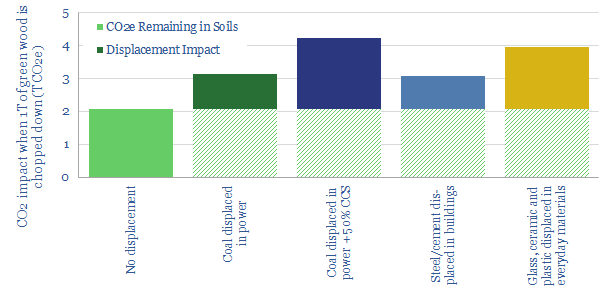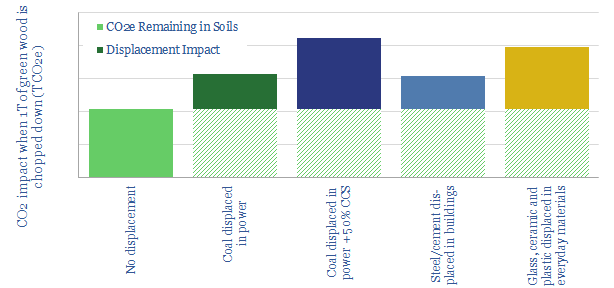Carbon-offsets, specifically forestry projects, can sequester 15bn tons of CO2 per annum, helping to accommodate 400TCF of gas per year and 85Mbpd per oil in a fully decarbonized energy system by 2050. The cost is below $50/ton, placing forests among the the most economic ways to decarbonize global energy, by a factor of c6x.
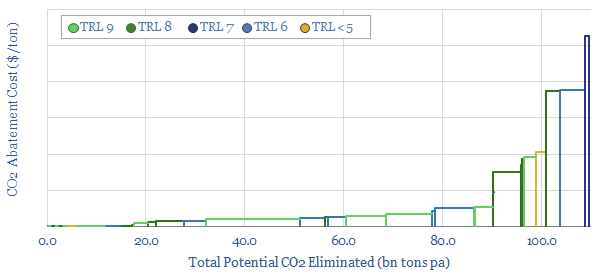
It is also a golden opportunity for climate-conscious energy companies to uplift their NAVs by 15-25%, generating and commercialising carbon offsets. The natural point of sale is together with the purchase of the fuel. (schematic below).
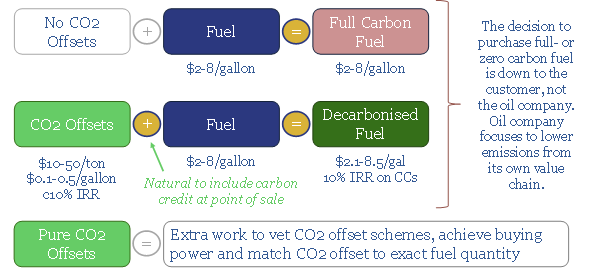
But a recurrent challenge goes as follows: if you eventually cut down the trees in the forest, do they still sequester CO2? (like a 21st century climate-variant of Bishop Berkeley’s 1710 thought experiment). This short note responds to the challenge.
How to think about CO2 offsets from forests?
Think in terms of land area, rather than in terms of tree tonnage. Each new acre devoted to forests should sequester around 5T of CO2 per annum. In other words, increasing the global land area that is covered by forests would increase the annual removal of CO2 from the atmosphere. Our target of 15bn ton per annum requires repurposing 3bn acres, or around c8% of the world’s land.
To maximise the rate at which forests offset CO2, our models suggest it is better to cut down old trees and replace them with new trees. This is because a mature forest absorbs CO2 more slowly than a maturing forest (charts below).
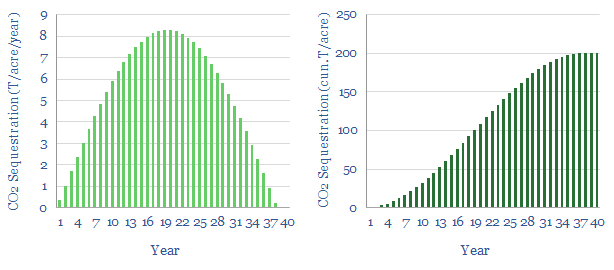
There are also economic benefits to re-seeding old forests, earning double-digit returns at a $15/ton carbon price. For contrast, $50/ton is needed to earn a 10% return under greenfield forestry economics (chart below).
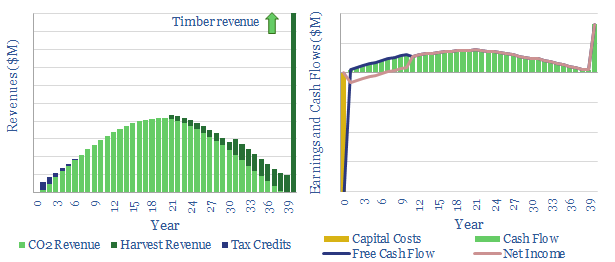
But what happens to the wood?
The wood could be burned and the forest will still lock up two-thirds of the CO2. This is because 69% of the CO2 locked up by forests is not stored in the wood, but in the soils beneath the forests, according to the IPCC and the FAO. Again, this carbon will remain fixed in the soils, as long as the land remains devoted to forestry.
Burning the wood also displaces fossil fuels. If sustainably sourced wood is burned in a power plant, it can displace the combustion of fossil fuels, such as coal. Generating 1MWH of power from coal emits 0.85T of CO2; and burning 1ton of coal emits c4T of CO2e. As an example, Drax is currently running the world’s first carbon-negative power plant at the 3.9GW Selby facility in North Yorkshire. It runs on wood pellets from responsibly managed forests, and a pilot is ongoing to capture the CO2 for sequestration (including using MCFCs, an exciting technology that we recently reviewed in depth, chart below).
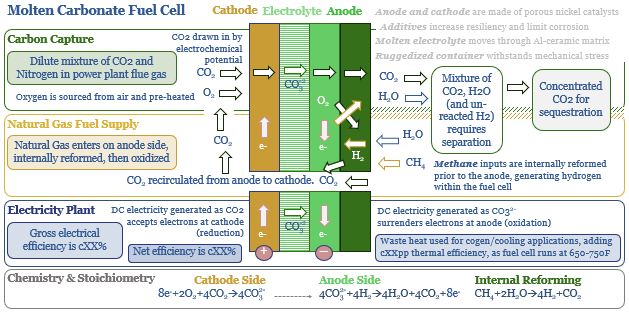
It is better if the wood is not burned, but instead used as a raw material. Do not underestimate how long wooden buildings can last, if properly maintained. The oldest wooden structure still standing is Japan’s Horyuji Buddhist temple, constructed in 639AD, and thus standing for over 1,400 years. Other examples include pre-Renaissance Italy (800-years old), Lhasa China (c1,400 years) and parts of the UK’s Greensted Church (c1,000 years old, below). Climatic conditions need to be dry, but not too dry.
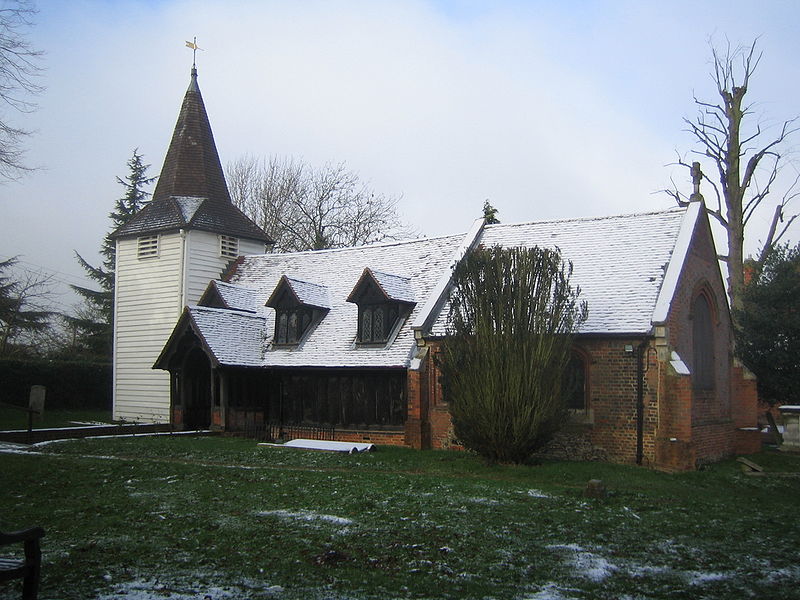
The oldest wood still being worked on planet Earth is even older: at 45,000 years old, from the Ancient Kauri forest in Northern New Zealand, which was levelled by a tsunami and preserved in a peat bog. An exception, rather than a rule. But even wood products that end up in landfill effectively sequester CO2.
Wood can displace other materials, and thus carry a further benefit. For example, it takes 1.9T of CO2 to make 1T of steel, around 1T of CO2 per ton of cement, around, 1.3-1.5T of CO2 per T of glass and ceramic, and as much as 5T of CO2 per ton of plastic (chart below). The relative benefit of wood will depend, of course, on the energy intensity of the wood processing. Relative CO2-savings should be possible.
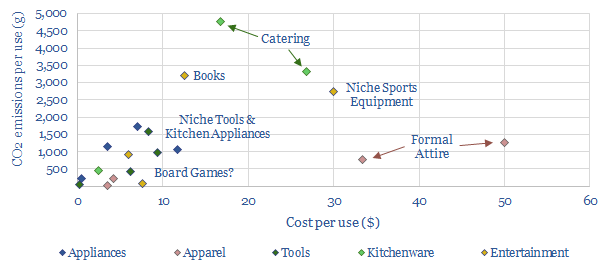
Thus on our numbers, the periodic harvesting of forests should not be considered to detract from the benefit of reforestation projects in offsetting CO2. Each ton of green wood cut down may still entail 1-4T of total CO2 sequestration (chart below). Please find our recent research on the opportunities in CO2-offsets linked here.
